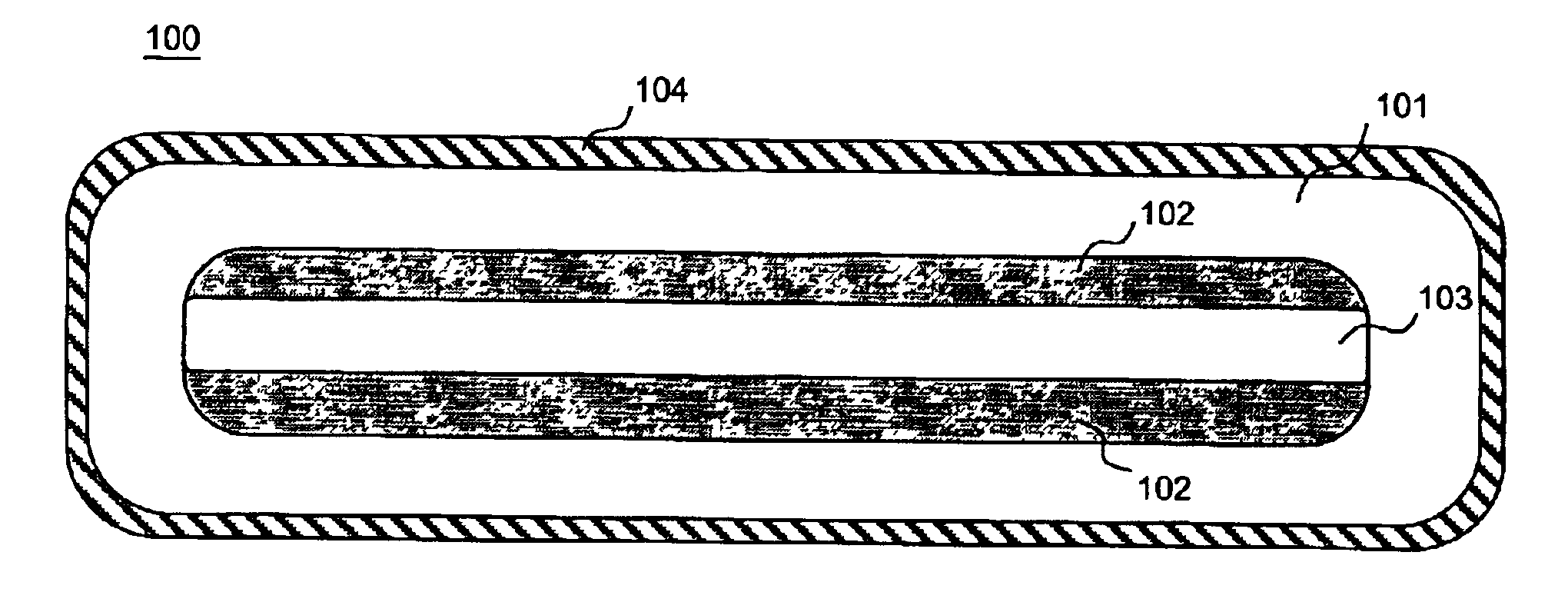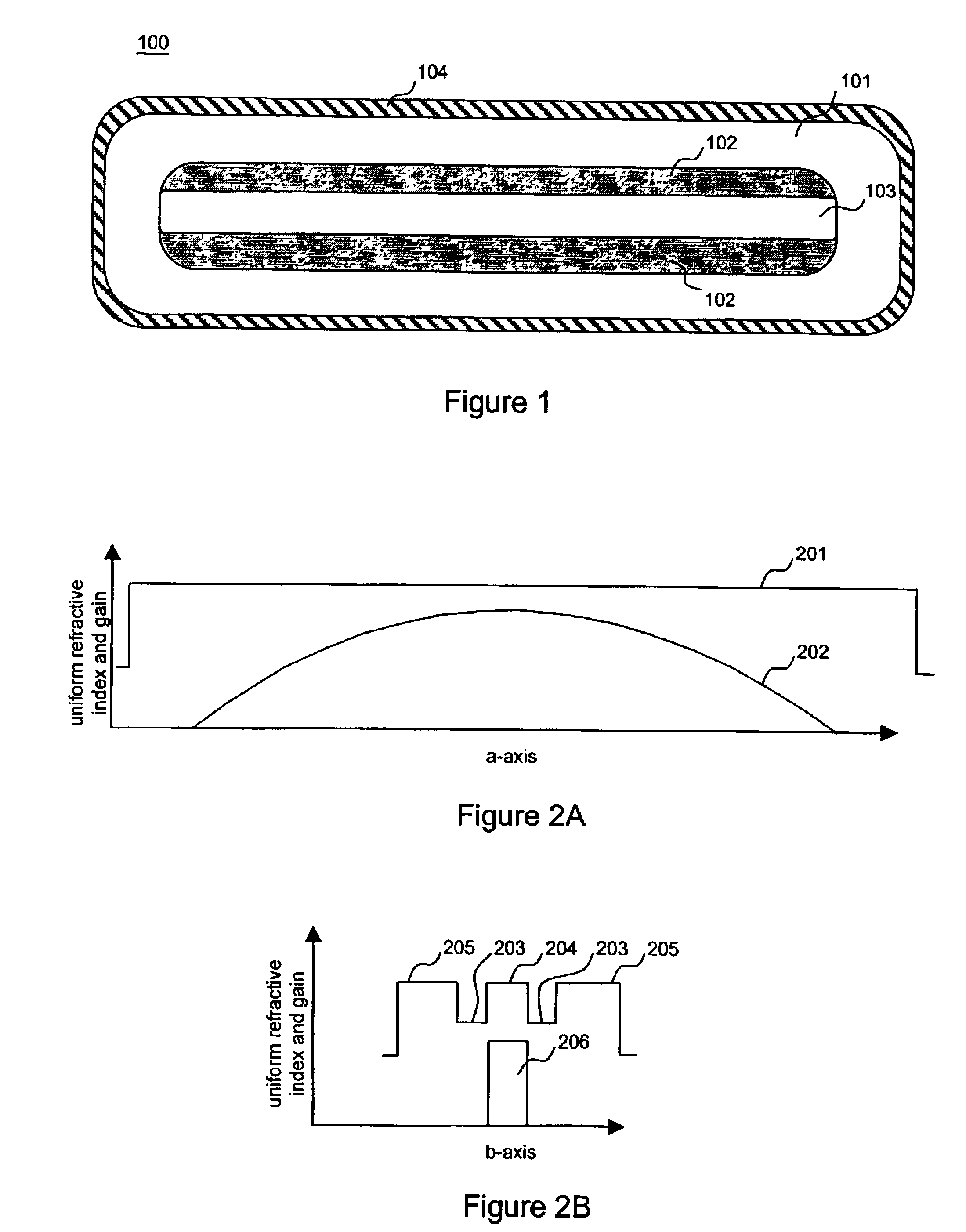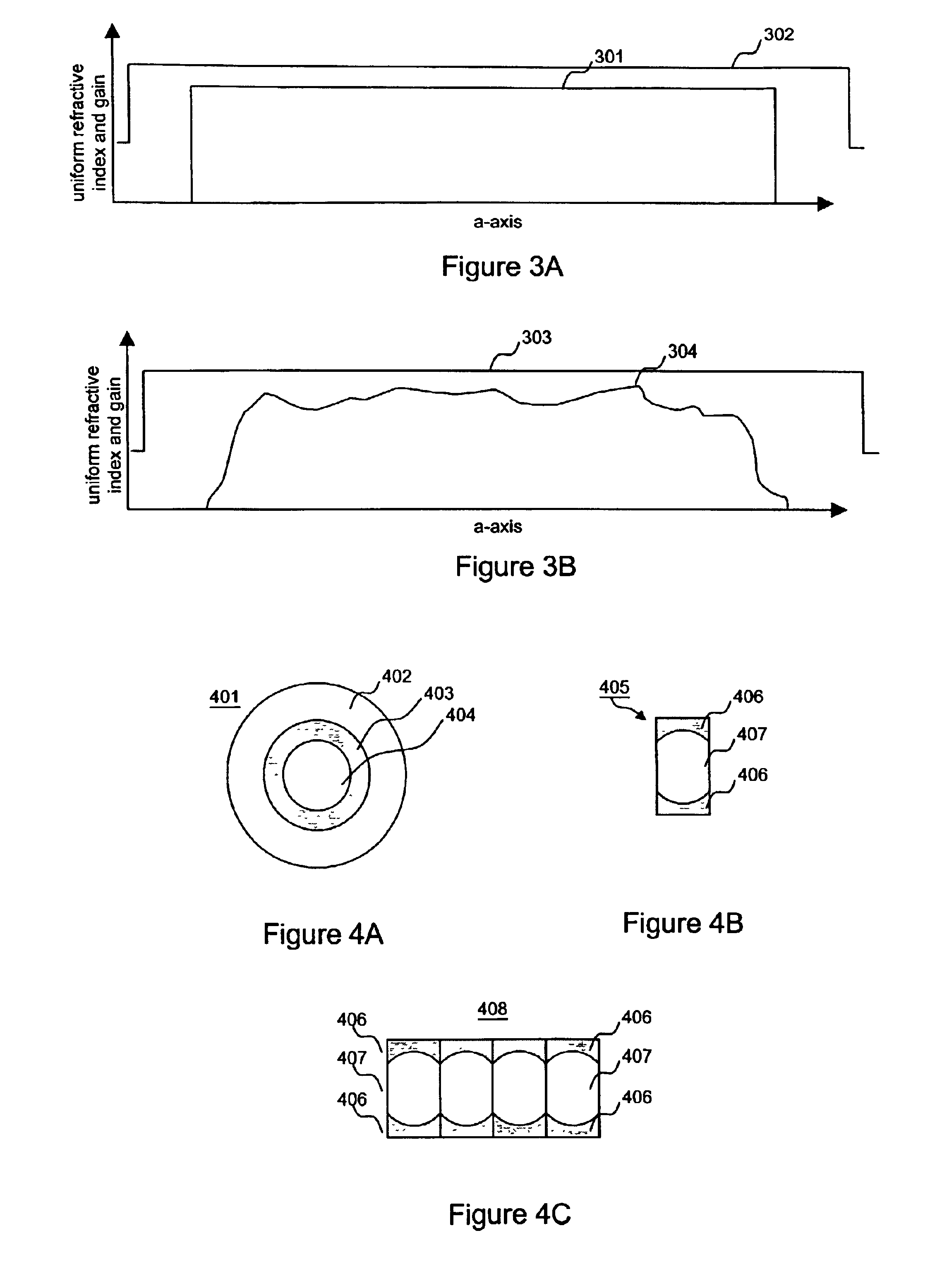Ultra high-power continuous wave planar waveguide amplifiers and lasers
a laser and amplifier technology, applied in the field of ultrahigh-power continuous wave planar waveguide lasers and amplifiers, can solve the problems of limiting power scalability, relatively non-flexible, and generally very short planar waveguides, and achieve the effect of avoiding bend losses
- Summary
- Abstract
- Description
- Claims
- Application Information
AI Technical Summary
Benefits of technology
Problems solved by technology
Method used
Image
Examples
Embodiment Construction
[0024]The cross section of a planar waveguide 100 according to an embodiment of this invention is shown in FIG. 1. In the following we refer to a planar waveguide simply as ‘planar’. The planar comprises a silica cladding 101, a depressed index cladding region 102, an index-matched parabolic gain profile rare-earth-doped planar core region 103 and a low refractive index outer coating (or cladding) 104. Though rare-earth-doping of the core region is preferred to produce a gain profile, doping with transition metals can alternatively be employed to produce a core region with a gain profile. For convenience we refer to the long planar axis as the a-axis and the short planar axis as the b-axis. Generally, rare-earth materials such as Nd, Yb, Er, Er / Yb, Tm, Ho or Pr or transition metals such as Cr or Ti are used as dopants to obtain gain in planar core region 103.
[0025]Low refractive index outer coating 104 is based on a Fluor-containing polymer and can also comprise Teflon, which provid...
PUM
| Property | Measurement | Unit |
|---|---|---|
| power | aaaaa | aaaaa |
| powers | aaaaa | aaaaa |
| mode size | aaaaa | aaaaa |
Abstract
Description
Claims
Application Information
 Login to View More
Login to View More - R&D
- Intellectual Property
- Life Sciences
- Materials
- Tech Scout
- Unparalleled Data Quality
- Higher Quality Content
- 60% Fewer Hallucinations
Browse by: Latest US Patents, China's latest patents, Technical Efficacy Thesaurus, Application Domain, Technology Topic, Popular Technical Reports.
© 2025 PatSnap. All rights reserved.Legal|Privacy policy|Modern Slavery Act Transparency Statement|Sitemap|About US| Contact US: help@patsnap.com



